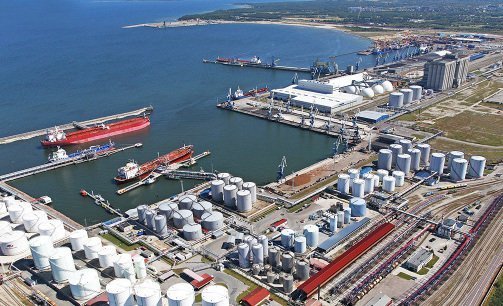Port of Tallinn develops roadmap to carbon neutrality

The Port of Tallinn, Estonia’s largest port, has carried out detailed research to determine the various onshore and offshore CO2 emissions its operations product to help it develop the appropriate measures to meet its goal of becoming fully carbon neutral by 2050.
In cooperation with the Estonian Maritime Academy of Tallinn University of Technology, the port has calculated the total amount of greenhouse gases based on data from 2019. The total was 27,069 tons of CO2 equivalent for the Port of Tallinn Group companies (Port of Tallinn, TS Laevad, TS Shipping). However, when the emissions of terminal operators and other traffic are added the total increases to 97,426 tonnes of CO2 equivalent.
An analysis of the emissions data shows that the largest share of greenhouse gas emissions from the port was accounted for by shipping (53%), followed by electricity consumption (23%), emissions from mobile vehicles (11%), heat consumption (10%) and stationary equipment (3%).
Work has already started to reduce emissions. Earlier this year the port announced that it had signed an agreement with utility company Eesti Energia to supply shoreside power to moored vessels based solely on green electricity produced within Estonia. This project will replace diesel-based power and reduce the Port’s total emissions by up to half.
Last year, TS Laevad, a subsidiary of the Port of Tallinn, also took an important step towards ending the use of fossil fuels and reaching zero emissions, when the ferry Tõll, which was converted into Estonia’s first hybrid passenger ship – serving passengers on the Virtsu-Kuivastu route.
The Port of Tallinn will continue to convert its fleet to alternative fuels, with the goal of reducing annual emissions by a further 20,563 tonnes of CO2 equivalent.
The Port of Tallinn has linked its strategy to the UN Sustainable Development Goals. In addition to climate neutrality, the aim is to achieve zero emissions for ships at berth and divert 70% of ship-generated waste to the circular economy, thus sustaining a cleaner Baltic Sea.
Valdo Kalm, chairman of the management board of the Port of Tallinn, said: “As an important transport and logistics hub in Estonia and by the Baltic Sea, we have a clear responsibility to ensure that the air is cleaner in the future and that we use resources as efficiently as possible. Our goal is also to contribute to the sustainable development of the entire Baltic Sea.”
